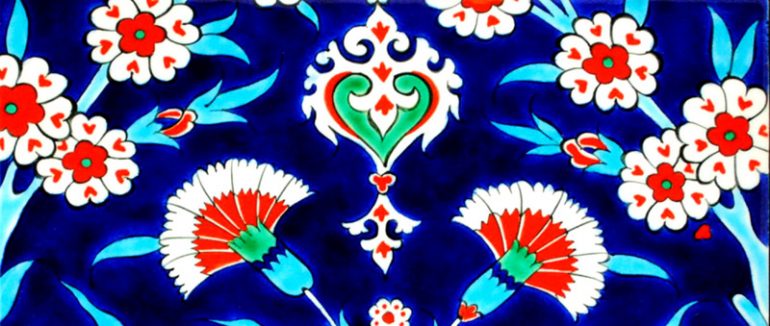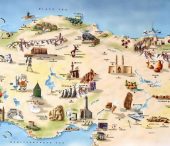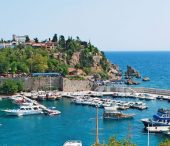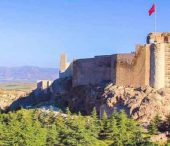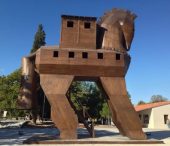Kütahya is a city in western Turkey with 213,000 inhabitants (2007 estimate), lying on the Porsuk river, at 930 metres above sea level. It is the capital of Kütahya Province, inhabited by some 684,082 people (2007 estimate). The city's Roman name was Cotyaeum, a name it retains as a titular Catholic see.
Modern city & province
The industries of Kütahya have long traditions, going back to ancient times. Kütahya is famous for its kiln products, such as tiles and pottery, which are glazed and multicoloured. Modern industries are sugar refining, tanning, nitrate processing and different products of meerschaum, which is extracted nearby. The local agricultural industry produces cereals, fruits and sugar beet. In addition stock raising is of much importance. Not far from Kütahya there are important mines extracting lignite.
Kütahya is linked by rail and road with Balıkesir 250 km (155 mi) to the west, Konya 450 km (280 mi) to the southeast, Eskişehir 70 km (43 mi) northeast and Ankara 300 km (186 mi) east.
Kütahya's largest town is Tavşanlı.
Kütahya's old neighbourhoods are dominated by traditional Ottoman houses made of wood and stucco, some of the best examples being found along Germiyan Caddesi. The region of Kütahya has large areas of gentle slopes with agricultural land culminating in high mountain ridges to the north and west.
The town preserves some ancient ruins, a Byzantine castle and church. During late centuries Kütahya has been renowned for its Turkish earthenware, of which fine specimens may be seen at the national capital. The Kütahya Museum has a fine collection of arts and cultural artifacts from the area.
Moreover the Main campus and the Germiyan campus of the Kütahya Dumlupınar University is located in the city.
History
3rd millennium BCE: Settled, and known as Kotiaion or Cotyaeum, "the city of the goddess Kotys". It was an important stopover on the road from the Marmara region to Mesopotamia.
12th century BC: Incorporated into the Phrygian kingdom, becoming one of the country's most important cities.
Its Greek name was Kotiaion according to its coins, commonly Latinized as Cotyaion, still meaning the city of Cotys.
The ancient city became part of the Roman province of Phrygia Salutaris.
It was a centre of heresy from the second century onwards. Socrates (IV, xxviii) speaks of its Novatian bishop. At first a simple suffragan of Synnada, it became an autocephalous archbishopric, probably in the eighth century, and about the tenth appears as a metropolis with three suffragan sees, which were later increased to thirteen (?).
Lequien (I, 851) mentions ten bishops, the last in the fourteenth century. The first is Cyrus, sent thither by Theodosius II, after four bishops had been slain by the inhabitants.
Around 700 BC: Phrygia collapses, but Kotiaion position as a strong city survives.
1071 CE: Conquered by the Seljuks.
Around 1095: Conquered by the Crusaders.
1182: Reconquered by the Seljuks.
1302: Becomes capital of the Germiyan Turkmen principality.
It was taken and plundered by Timur-Leng (Tamerlane) in 1402.
1428: Becomes part of the Ottoman Empire.
1514: Sultan Selim I resettles tile-workers from Tabriz in Kütahya and İznik after defeating the Persians. With this Kütahya emerges as a centre for the Ottoman ceramic industry, producing tiles and faience for mosques, churches and official buildings in places all over the Middle East.
19th century: With the fast growth of Eskişehir 70 km away, Kütahya has lost much of its regional and economic importance.
It was under Ottoman rule the chief town of a sanjak in the vilayet of Brusa, called by the Turks Kutaya. It had about 22,000 inhabitants, including 4,000 Greeks, 2,300 Armenians, 700 Catholic Armenians, and a few Latins; it contains two schools. It is also the see of a non-Catholic Armenian bishop.

